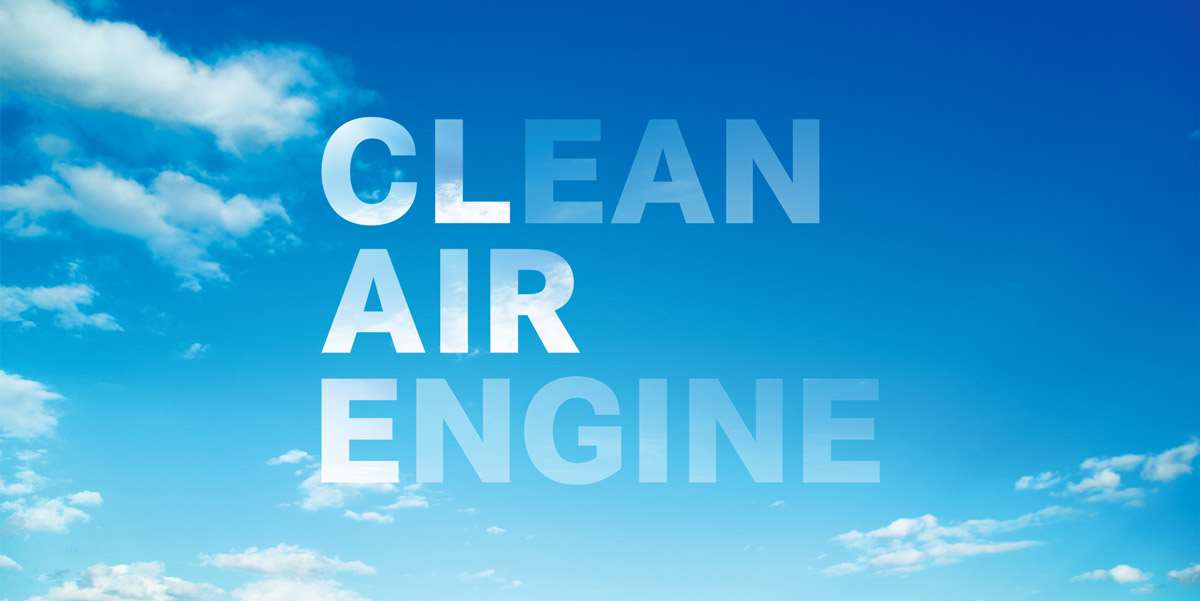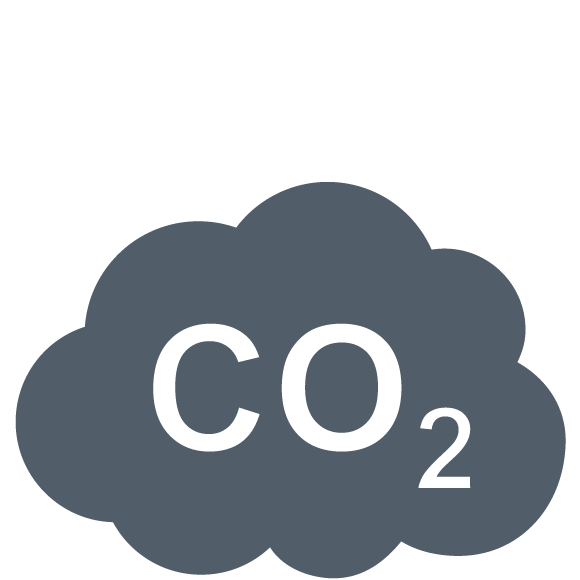Product
Climate impact of aircraft engines
With innovative propulsion products, MTU is often a technology pacesetter. We are also hard at work on new generations of propulsion systems that will be even more sustainable. With our Claire agenda, we have more forward-looking concepts than ever before.

Zero emissions—this is MTU’s vision and overall goal when it comes to reducing the climate impact of propulsion systems in flight operations. By taking on responsibility for climate action, we want to help achieve the goals laid out in the Paris Agreement, which serves as a focal point in our technology development. We base our own objectives on the EU Green Deal, which is derived from the Paris target of a 1.5 degree increase and aims to achieve climate neutrality by 2050. In our Claire (Clean Air Engine) technology agenda, we have formulated possible solutions for aircraft engines and ways they can reduce climate impact and energy consumption. We aim to achieve these goals in three stages. Our efforts here no longer focus solely on carbon emissions, but on the overall climate impact of air traffic. In addition to CO2 emissions, this also includes non-CO2 effects, triggered mainly by the emission of nitrogen oxides and the formation of contrails. MTU realigned its Claire agenda in 2022 to reflect this paradigm shift.
Because of the longer product cycles in aviation, climate goals for propulsion systems take a long-term perspective and are established in memoranda of understanding by stakeholders (airlines, aviation industry, research, aviation authorities), such as Fly the Green Deal, Europe’s vision for climate-neutral aviation. To be effective across the board in 2050 and help in achieving climate neutrality, products that enable climate-neutral flight must be brought to market well before then. That is why we are ramping up the development of completely new propulsion concepts that go above and beyond the conventional gas turbine. For these revolutionary engine architectures, we collaborate with partners from industry, academia, and research, such as Bauhaus Luftfahrt or the German Aerospace Center. In parallel, MTU is working to enhance existing propulsion systems, such as the highly efficient geared turbofan (GTF) together with our partner Pratt & Whitney, and to couple these with sustainable fuels.
Three stages toward emissions-free flight with Claire
Evolutionary refinement based on the geared turbofan
Together with Pratt & Whitney, MTU offers a highly efficient propulsion concept: the GTF™ engine family used in modern narrowbody aircraft—the Airbus A320neo and A220 as well as the Embraer E-Jet E2 family. Per flight, engines from the GTF family reduce energy consumption and CO2 emissions by up to 20% compared to the previous generation. Since its entry into service, the GTF™ engine family has logged 26 million flight hours, saving 14 million metric tons of CO2 (according to Pratt & Whitney as of the end of 2023). It has also achieved significant improvements regarding nitrogen oxides (NOx), with 50% fewer emissions than the previous model.
Fast facts: Geared turbofan

million flight hours and 900 million passengers on board

billion liters less kerosene consumed

million metric tons of CO2 saved
Compared to the previous engine generation, as of the end of 2023, according to information from Pratt & Whitney
The GTF Advantage, a technologically improved version for the A320neo family, is currently undergoing trials. It has also already been successfully tested with 100% sustainable aviation fuel (SAF). Entry into service is planned in the next few years. To exploit the GTF’s full potential, MTU is working with Pratt & Whitney to prepare the next generation of the product. Many of the technologies required for this are being developed as part of the German Federal Aviation Research Program (LuFo). MTU is concentrating on its GTF components, namely, the high-pressure compressor and the high-speed low-pressure turbine.
Sustainable aviation fuel
Alternative fuels from renewable energy
SAFs (sustainable aviation fuels) are sustainably produced alternatives that can be used as drop-in fuels, i.e. without major adjustments. They are playing a major role on the way to climate-neutral aviation. MTU maintains an ongoing dialogue with relevant stakeholders and participates in studies to support the introduction of SAF; for example, through its membership in the Aviation Initiative for Renewable Energy in Germany (aireg e.V.), an association of airlines, manufacturers, and research institutions. An aireg study on sustainable fuels conducted with the involvement of MTU highlighted the great potential of SAF.
In addition, in the reporting year MTU signed a letter of intent to initiate a research collaboration for power-to-liquid aviation fuels (PtL). The endeavor will involve representatives from MTU, Lufthansa, DLR, Airbus, and Munich Airport. PtL represents the next generation of SAFs and is particularly promising from an environmental and scaling perspective. The collaboration will pool the strengths of leading aviation companies and science to accelerate the technology selection, market introduction, and industrial scaling of PtL aviation fuels in Germany. It will also address other issues, such as the effect on local air quality, maintenance requirements, and the use of pure PtLs, i.e. those without the addition of fossil kerosene.
In the long term, hydrogen will serve as the basis for climate-neutral propulsion of the future. We see three application possibilities: it can be burned directly in a gas turbine engine, converted into an SAF, or converted into electrical energy by means of a fuel cell. MTU, aircraft manufacturers, and industry are working on bringing climate-friendly hydrogen technologies to aviation and building up the requisite infrastructure.
Achieving climate neutrality with revolutionary propulsion concepts
Wet combustion is better for the climate: Our WET concept
Evolutionary technological development will not be enough to achieve climate neutrality by 2050. Revolutionary propulsion concepts are needed. MTU’s favored technology is the Water-Enhanced Turbofan (WET). Utilizing thermal energy from the exhaust gas stream, the WET concept uses a heat exchanger to vaporize water, which is then injected into the combustor. The water for this purpose is extracted from the exhaust gas by means of a condenser. “Wet” combustion of this kind massively reduces nitrogen oxide emissions, while also substantially decreasing fuel consumption, CO2 emissions, and the formation of contrails. As part of SWITCH, one of the largest technology projects to emerge from the first call issued by the European Commission’s Clean Aviation research program, both innovative WET and hybrid-electric technologies are being developed. SWITCH was launched in 2023. Within three years, the project aims to ground-test a hybrid-electric gas turbine engine based on the geared turbofan, and to bring the WET concept to a level of technological maturity that includes successful component validation in the laboratory. Within the framework of SWITCH, an international consortium is working together under the leadership of MTU. The industry partners are Airbus, Pratt & Whitney, Collins Aerospace and GKN Aerospace; further partners include DLR and universities.
Virtually emissions-free in the air: Flying Fuel CellTM
Another revolutionary propulsion concept in aviation is the full electrification of the powertrain. MTU calls its version of this the Flying Fuel Cell. It will initially be used on shorter routes in the feeder and regional aircraft sector starting in 2035. As its efficiency improves, the Flying Fuel Cell will expand to short- and medium-haul routes, further reducing the climate impact of commercial aviation. This propulsion system does not produce any emissions of CO2, NOx, or particulates. The Flying Fuel Cell scored points in the second Clean Aviation call in 2023 and was accepted as a funded project under the title Hydrogen-Electric Zero Emission Propulsion System (HEROPS).


